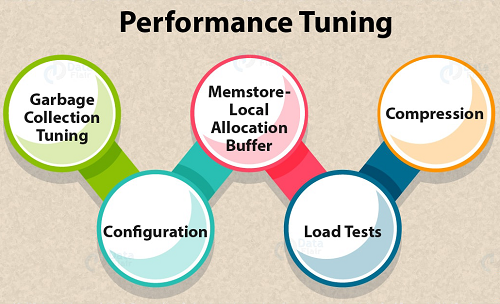Performance Tuning?
Database performance tuning encompasses the steps you can take to optimize performance with the goal of maximizing the use of system resources for greater efficiency. By fine-tuning certain database elements such as index use, query structure, data models, system configuration, and application design, you can significantly impact the overall performance of your application.
With the added complexity of growing data volumes and ever-changing workloads, database performance tuning is now necessary to maximize resource utilization and system performance. However, performance tuning is often easier said than done.
Database Optimization for Developers
- Use 3BNF database design explained in this tutorial in RDBMS Concepts chapter.
- Avoid number-to-character conversions because numbers and characters compare differently and lead to performance downgrade.
- While using SELECT statement, only fetch whatever information is required and avoid using * in your SELECT queries because it would load the system unnecessarily.
- Create your indexes carefully on all the tables where you have frequent search operations. Avoid index on the tables where you have less number of search operations and more number of insert and update operations.
- A full-table scan occurs when the columns in the WHERE clause do not have an index associated with them. You can avoid a full-table scan by creating an index on columns that are used as conditions in the WHERE clause of an SQL statement.
- Be very careful of equality operators with real numbers and date/time values. Both of these can have small differences that are not obvious to the eye but that make an exact match impossible, thus preventing your queries from ever returning rows.
- Use pattern matching judiciously. LIKE COL% is a valid WHERE condition, reducing the returned set to only those records with data starting with the string COL. However, COL%Y does not further reduce the returned results set since %Y cannot be effectively evaluated. The effort to do the evaluation is too large to be considered. In this case, the COL% is used, but the %Y is thrown away. For the same reason, a leading wildcard %COL effectively prevents the entire filter from being used.
- Fine tune your SQL queries examining the structure of the queries (and subqueries), the SQL syntax, to discover whether you have designed your tables to support fast data manipulation and written the query in an optimum manner, allowing your DBMS to manipulate the data efficiently.
- For queries that are executed on a regular basis, try to use procedures. A procedure is a potentially large group of SQL statements. Procedures are compiled by the database engine and then executed. Unlike an SQL statement, the database engine need not optimize the procedure before it is executed.
- Avoid using the logical operator OR in a query if possible. OR inevitably slows down nearly any query against a table of substantial size.
- You can optimize bulk data loads by dropping indexes. Imagine the history table with many thousands of rows. That history table is also likely to have one or more indexes. When you think of an index, you normally think of faster table access, but in the case of batch loads, you can benefit by dropping the index(es).
- When performing batch transactions, perform COMMIT at after a fair number of records created instead of creating them after every record creation.
- Plan to defragment the database on a regular basis, even if doing so means developing a weekly routine.

